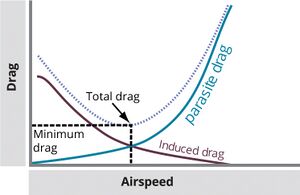Glide Extension
Glide Extension

Glide extension refers to techniques pilots use to increase the distance an aircraft can glide after engine failure. These techniques are critical for maximizing reach to a safe landing location.
Best Glide Speed (L/D Max)
This is the airspeed at which the aircraft can cover the greatest distance for each unit of altitude lost.
- Pilots should be familiar with their aircraft’s best glide speed, typically listed in the Pilot Operating Handbook (POH).
- Maintaining this speed ensures the aircraft glides efficiently and maximizes distance.
Wind Conditions
- Tailwinds increase ground speed, allowing the aircraft to cover more distance in the same time.
- Headwinds reduce ground speed, decreasing effective glide range.
- Pilots must account for wind direction and speed when planning a glide.
Other Factors
- Altitude: Higher altitude at engine failure increases potential glide distance.
- Aircraft Design: Different aircraft have different glide ratios.
- Flaps: Increase drag and reduce glide performance; should be retracted.
- Propellers: Coarse pitch (low RPM) reduces drag in aircraft with constant-speed propellers.
Glide Ratio
The glide ratio is the distance an aircraft travels horizontally for every unit of altitude lost.
- Higher glide ratios result in greater glide distance.
- A common estimate: 1.5 nautical miles per 1000 feet of altitude.
Glide Distance Calculation
To estimate glide distance:
- Glide Distance (NM) = Glide Ratio * Altitude (ft) / 1000
- Example: A glide ratio of 1.5 at 5000 feet gives a distance of 7.5 NM.
Configuration Tips for Glide Extension
Based on Flight Safety Australia:
- Maintain proper configuration: gear up, flaps retracted, cowl flaps closed.
- Reduce propeller RPM to decrease drag (if equipped).
- Avoid skidding/slipping turns, maintain coordinated flight.
- Fine-tune speed based on aircraft weight and conditions.
Practical Advice
- Visualize your glide range like a ring around the aircraft.
- Practice transitions from best glide speed to landing configuration.
- In some aircraft, leaving the gear up until landing surface is assured is advised.
- Practice "Power-off 180" maneuvers and short-field landings for proficiency.
References